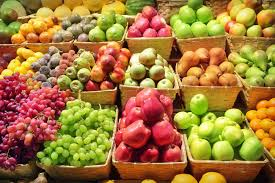Organic fruit farming is a sustainable agricultural practice that focuses on growing fruits without synthetic chemicals, pesticides, or genetically modified organisms (GMOs). This method emphasizes natural processes, biodiversity, and ecological balance to produce healthy and flavorful fruits while protecting the environment.
The cornerstone of organic fruit farming is soil health. Organic farmers use natural fertilizers such as compost, manure, and green manure to enrich the soil with essential nutrients.
These organic materials improve soil structure, enhance its water-holding capacity, and foster a thriving ecosystem of beneficial microorganisms. Healthy soil is vital for growing strong and resilient fruit trees and plants. Crop rotation and cover cropping are also important practices. By alternating the types of crops grown on a piece of land, farmers can prevent soil depletion, reduce pest and disease cycles, and promote soil fertility.
Pest and disease management in organic fruit farming relies on natural methods. Farmers use biological control by introducing beneficial insects like ladybugs and predatory wasps that prey on pests. They also employ mechanical controls, such as traps, barriers, and netting, to protect crops. Organic farmers avoid synthetic pesticides and instead use natural alternatives, such as neem oil, insecticidal soaps, and plant-based sprays. Crop diversity and rotation also play a crucial role in minimizing pest outbreaks and maintaining a healthy ecosystem.
Water management is essential in organic fruit farming. Efficient irrigation systems, like drip irrigation, ensure that water is used wisely and that plants receive the right amount of moisture. Organic farmers also practice rainwater harvesting and use mulching techniques to conserve soil moisture and reduce water evaporation. Protecting water resources is a priority, and measures are taken to prevent contamination from agricultural activities.
Biodiversity is a key principle in organic fruit farming. Farmers cultivate a variety of fruit species and varieties, creating a diverse and resilient ecosystem. This biodiversity helps attract beneficial insects, pollinators, and birds that contribute to the health and productivity of the orchard. Agroforestry practices, such as integrating trees and shrubs with fruit crops, enhance biodiversity, improve soil health, and provide additional income through the sale of timber, nuts, and other tree products.
Organic fruit farmers often choose heirloom and open-pollinated varieties. These varieties have been selected over generations for their flavor, nutritional value, and adaptability to local conditions. By preserving and cultivating these traditional varieties, organic farmers contribute to the conservation of genetic diversity and the protection of heritage fruits.
The benefits of organic fruit farming extend to consumers. Organic fruits are free from synthetic pesticides and GMOs, making them a healthier choice. They often contain higher levels of vitamins, minerals, and antioxidants compared to conventionally grown fruits. Additionally, organic farming practices help mitigate climate change by sequestering carbon in the soil and reducing greenhouse gas emissions. By avoiding synthetic fertilizers and pesticides, organic farmers prevent soil and water pollution, protecting the environment and human health.
Despite its many advantages, organic fruit farming does face challenges. It can be labor-intensive and may require more knowledge and skills compared to conventional farming. Organic yields may be lower initially, and the transition period can be challenging for farmers. However, the growing demand for organic products provides an opportunity for farmers to invest in sustainable practices and benefit from premium prices for their produce.
Organic fruit farming is a sustainable and holistic approach to agriculture that prioritizes soil health, biodiversity, and natural processes. By using organic fertilizers, practicing crop rotation, and managing pests naturally, organic farmers can grow nutritious and flavorful fruits while protecting the environment. The benefits of organic farming extend to consumers, offering healthier food options, and contributing to a more sustainable and resilient food system.
Principles of Organic Fruit Farming
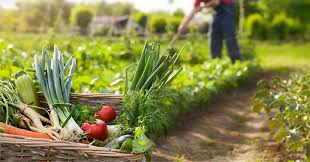
1. Soil Health: Healthy soil is the cornerstone of organic fruit farming. Use compost, green manure, cover crops, and minimal tillage to enhance soil fertility and structure.
2. Biodiversity: Growing a variety of fruit species and varieties increases biodiversity, reduces pest and disease risks, and promotes a balanced ecosystem.
3. Natural Pest Control: Implement integrated pest management (IPM) techniques, such as introducing beneficial insects, using organic-approved pesticides like neem oil, and practicing crop rotation.
4. Water Management: Employ efficient irrigation methods like drip irrigation to conserve water and maintain consistent soil moisture.
5. Organic Seeds and Planting Materials: Use organic seeds, saplings, and rootstocks to ensure compliance with organic standards and enhance crop resilience.
Read Also: Importance and Types of Pets
Steps to Start an Organic Fruit Farm
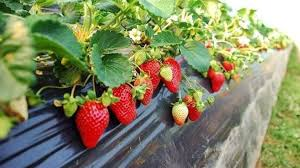
1. Soil Testing: Conduct soil tests to determine pH, nutrient levels, and texture. Amend soil based on test results to optimize fertility.
2. Selecting Fruit Varieties: Choose fruit varieties suited to your climate, soil, and market demand. Consider a mix of tree fruits, berries, and vines.
3. Orchard Planning: Develop a plan for orchard layout, including spacing, trellising (if needed), and crop rotation to maintain soil health and manage pests and diseases.
4. Composting: Create compost from organic matter like kitchen scraps, yard waste, and manure to enrich soil.
5. Pest Management: Use natural pest control methods such as beneficial insects, organic pesticides, and companion planting to manage pests.
6. Irrigation: Install efficient irrigation systems, such as drip or soaker hoses, to provide consistent moisture while conserving water.
7. Certification: Obtain organic certification by following organic standards, maintaining detailed records, and undergoing regular inspections.
8. Marketing: Develop a marketing strategy to sell your organic fruits. Consider farmers’ markets, CSA programs, local grocery stores, and online platforms.
Benefits of Organic Fruit Farming
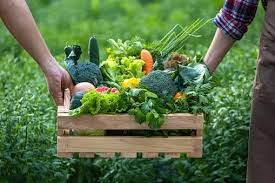
1. Environmental Health: Organic fruit farming avoids synthetic pesticides and fertilizers, reducing soil and water pollution. It enhances biodiversity by promoting natural habitats for beneficial insects and wildlife.
2. Soil Fertility: Organic practices improve soil health through the use of compost, cover crops, and crop rotation. This leads to richer, more fertile soil that supports better fruit growth and reduces erosion.
3. Healthier Produce: Organic fruits are free from synthetic chemicals and GMOs, offering consumers safer, healthier options. They often have higher nutritional value due to improved soil health and natural growing conditions.
4. Reduced Environmental Impact: Organic farming reduces reliance on fossil fuels and promotes sustainable practices, such as composting and green manure, which decrease the carbon footprint of fruit production.
5. Market Demand: There is a growing consumer demand for organic produce. Organic fruit often commands higher prices in the market, providing farmers with better economic returns.
How to Select the Right Fruit Varieties
1. Local Adaptation: Choose fruit varieties that are well-suited to the local climate and soil conditions. Varieties adapted to the local environment will be more resilient and productive.
2. Disease and Pest Resistance: Opt for fruit varieties that are resistant to common pests and diseases in your area. This reduces the need for interventions and enhances the sustainability of your organic farm.
3. Yield and Quality: Consider varieties known for their high yield and superior fruit quality. High-quality fruits attract premium prices in the organic market.
4. Harvest Time: Select varieties with staggered harvest times to spread out the workload and maximize the use of available labor and resources throughout the growing season.
Soil Preparation and Management
1. Soil Testing: Begin with a soil test to determine nutrient levels and pH. This helps in tailoring soil amendments and ensuring optimal growing conditions for fruit plants.
2. Organic Amendments: Use organic materials such as compost, manure, and green manure to improve soil fertility and structure. These amendments enhance nutrient availability and promote healthy root development.
3. Cover Crops: Plant cover crops like legumes and grasses during the off-season. They help prevent soil erosion, suppress weeds, and add organic matter to the soil.
4. Mulching: Apply organic mulch around fruit plants to retain moisture, regulate soil temperature, and suppress weeds. Mulch also adds organic matter as it decomposes, improving soil health.
5. Crop Rotation: Rotate fruit crops with other plant types to break pest and disease cycles and maintain soil fertility. Avoid planting the same type of fruit in the same location year after year.
Pest and Disease Control
1. Integrated Pest Management (IPM): Implement IPM strategies, combining biological control, cultural practices, and physical barriers. Encourage beneficial insects that prey on pests and use organic-approved pest control products when necessary.
2. Disease Resistance: Select fruit varieties with natural resistance to common diseases. Regularly inspect plants for signs of disease and act promptly to manage any outbreaks.
3. Sanitation Practices: Maintain cleanliness in the orchard by removing diseased plant material and debris. Proper sanitation helps prevent the spread of pests and diseases.
4. Organic Treatments: Use organic treatments such as neem oil, insecticidal soap, and plant-based fungicides to manage pests and diseases. These treatments are effective and align with organic farming principles.
5. Cultural Practices: Employ cultural practices such as proper spacing, pruning, and training to improve air circulation and reduce the risk of disease. Healthy, well-maintained plants are less susceptible to pests and diseases.
Watering and Irrigation Practices
1. Water Conservation: Implement water-saving techniques such as drip irrigation or soaker hoses. These methods deliver water directly to the root zone, reducing water waste and ensuring efficient moisture delivery.
2. Irrigation Scheduling: Develop an irrigation schedule based on the fruit plants’ needs, soil moisture levels, and weather conditions. Avoid overwatering, which can lead to root rot and other problems.
3. Rainwater Harvesting: Consider harvesting rainwater for irrigation. This sustainable practice reduces dependence on municipal water sources and lowers irrigation costs.
4. Soil Moisture Monitoring: Use soil moisture sensors or simple methods like soil feel tests to monitor moisture levels and adjust irrigation practices accordingly.
5. Mulching for Moisture Retention: Apply organic mulch to help retain soil moisture and reduce the frequency of irrigation. Mulch also helps maintain soil temperature and suppress weeds.
Harvesting Techniques
1. Timing: Harvest fruits at the peak of ripeness for optimal flavor, texture, and nutritional value. Monitor fruit maturity closely and harvest at the right time to avoid overripe or underripe produce.
2. Gentle Handling: Handle fruits with care to prevent bruising and damage. Use clean, sharp tools and avoid rough handling during picking and transportation.
3. Sorting and Grading: Sort and grade fruits according to size, color, and quality. This ensures that only the best quality fruits reach the market and helps maintain a high standard for organic produce.
4. Storage: Store harvested fruits in suitable conditions to prolong shelf life and maintain quality. Use organic-approved storage methods and avoid chemicals that are not allowed in organic farming.
5. Record Keeping: Maintain detailed records of harvest dates, quantities, and quality. This helps in planning future harvests and managing inventory effectively.
Organic fruit farming, with its focus on environmental health, soil management, and sustainable practices, offers numerous benefits for both producers and consumers. By choosing the right fruit varieties, preparing and managing soil effectively, controlling pests and diseases, implementing efficient watering practices, and employing proper harvesting techniques, organic fruit farmers can achieve successful, sustainable, and profitable operations.
Read Also: Lynx Point Siamese Cat Breed Description and Care Guide
Frequently Asked Questions (FAQs) About Organic Fruit Farming
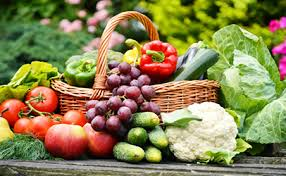
1. What is organic fruits farming?
Organic fruits farming involves cultivating fruits without synthetic chemicals, using natural methods to enhance soil health, pest control, and sustainability.
2. How does organic fruits farming differ from conventional farming?
Organic farming excludes synthetic pesticides and fertilizers, promotes biodiversity, and emphasizes ecological balance, while conventional farming often relies on chemical inputs and monocultures.
3. What are the main benefits of organic fruits farming?
The main benefits include improved soil health, increased biodiversity, reduced chemical exposure, higher nutrient content in produce, and economic advantages like premium prices and market demand.
4. Is organic fruits farming more labor-intensive?
Yes, organic fruits farming can be more labor-intensive due to practices like manual weeding, detailed management of soil health, and natural pest control methods.
5. Can organic fruits farming be profitable?
Yes, organic fruits farming can be profitable due to premium prices for organic produce, growing consumer demand, and reduced costs associated with synthetic inputs.
6. How does organic fruits farming impact the environment?
Organic farming positively impacts the environment by reducing pollution, conserving water, enhancing soil health, and supporting biodiversity.
7. Are organic fruits healthier than conventionally grown ones?
Organic fruits are often healthier as they contain fewer pesticide residues and can have higher levels of certain nutrients, though overall health benefits can vary.
8. What is the cost of converting to organic fruits farming?
Converting to organic farming can involve costs related to certification, changes in farming practices, and potential initial yield reductions, but long-term benefits often outweigh these costs.
9. How do I get certified as an organic fruits farmer?
To get certified, follow organic standards set by a certification body, maintain detailed records, and undergo regular inspections to ensure compliance.
10. What are the challenges of organic fruits farming?
Challenges include managing pests and diseases without synthetic chemicals, maintaining soil fertility, achieving consistent yields, and navigating certification processes.

